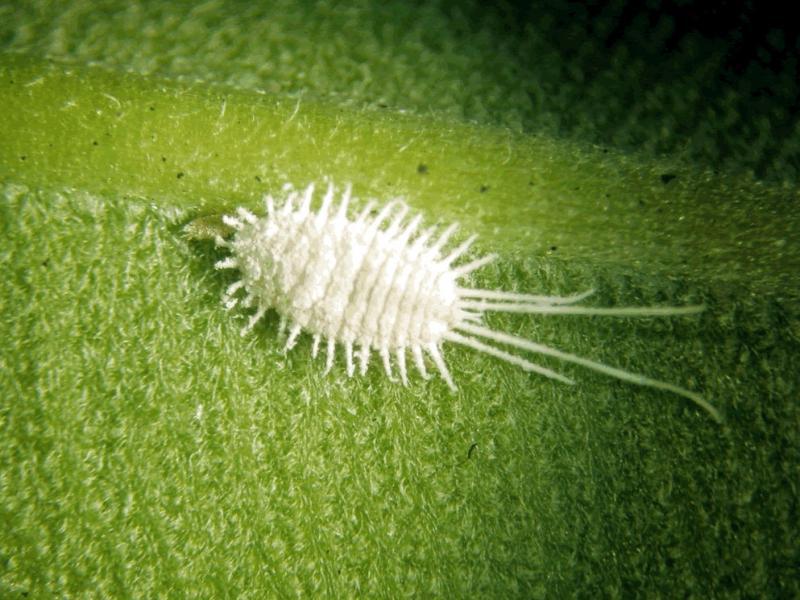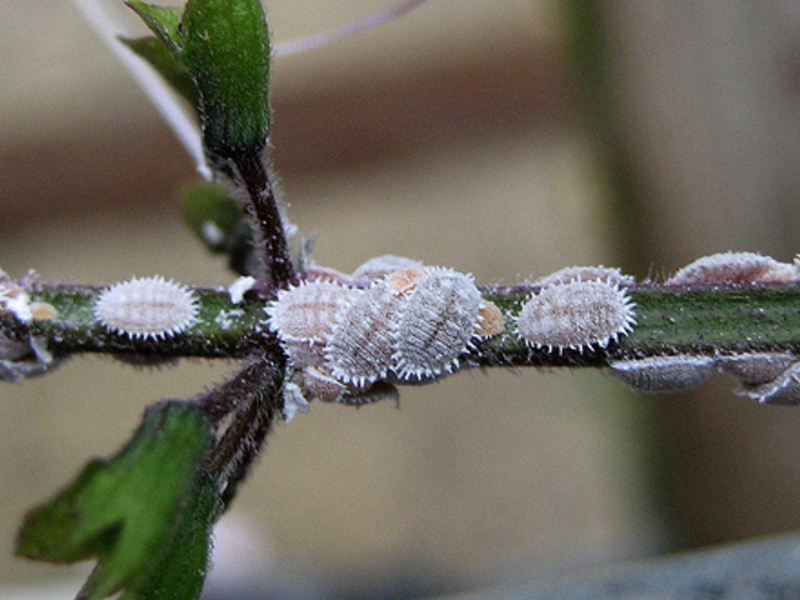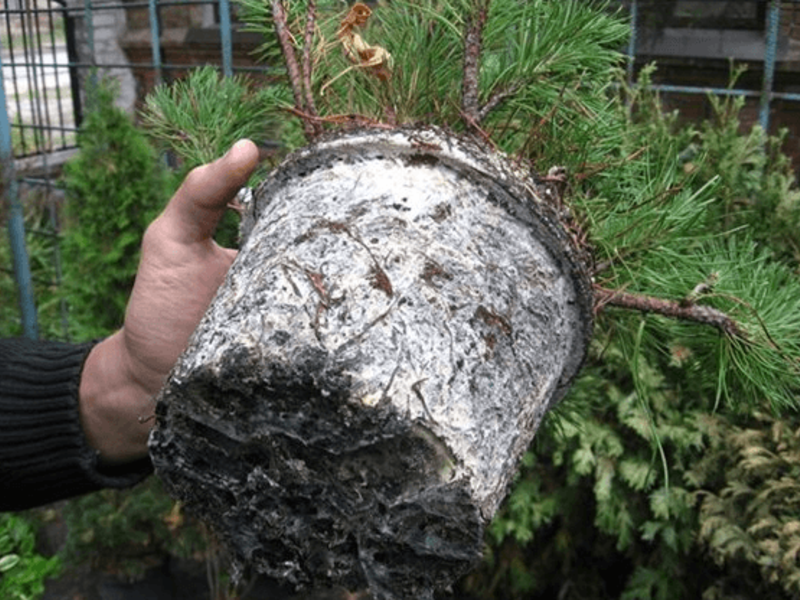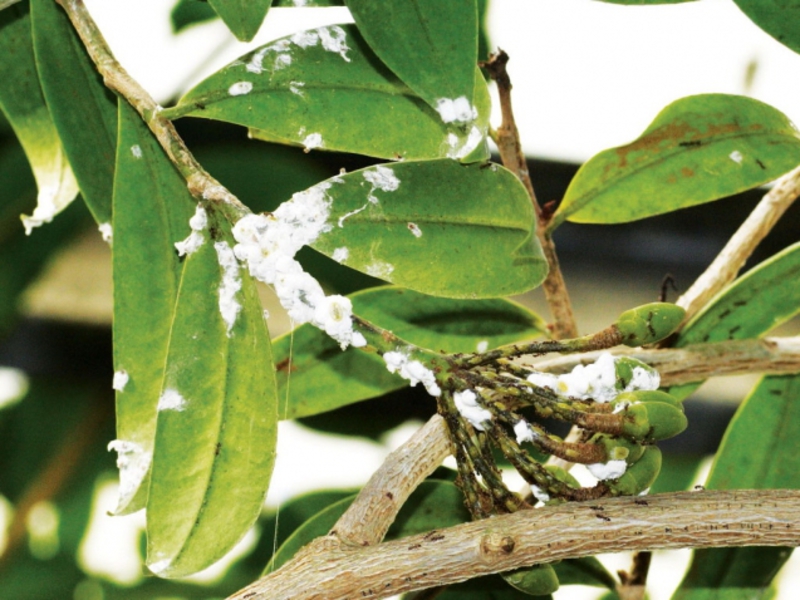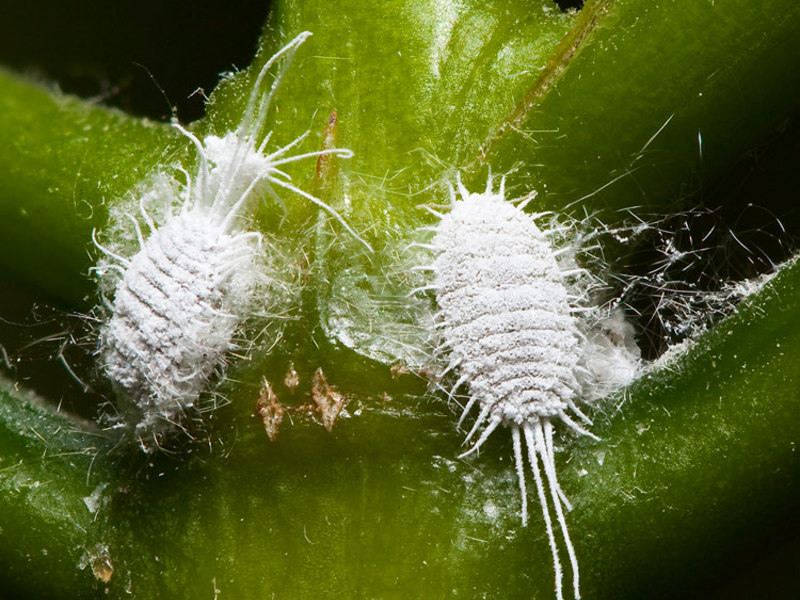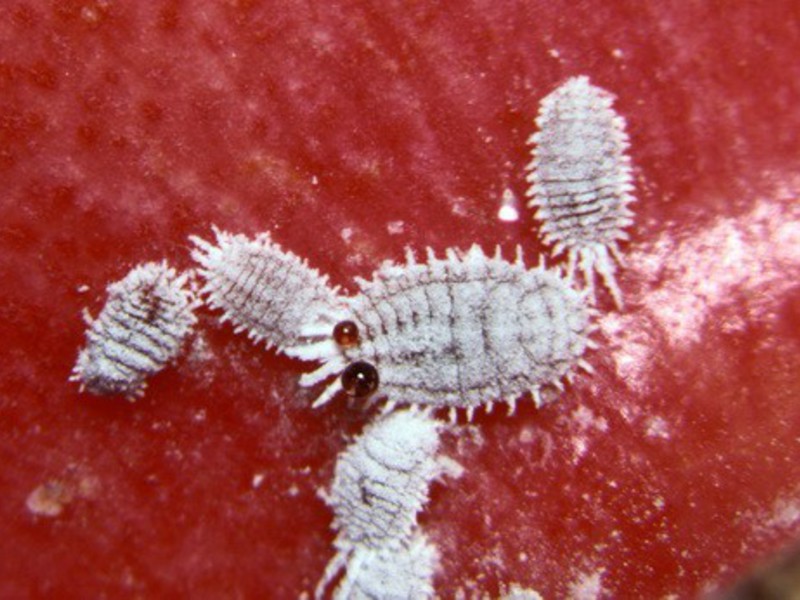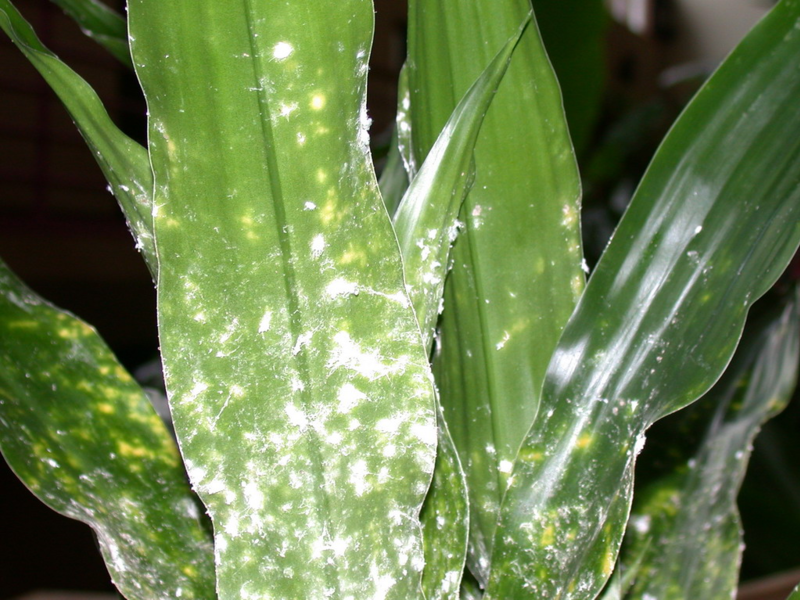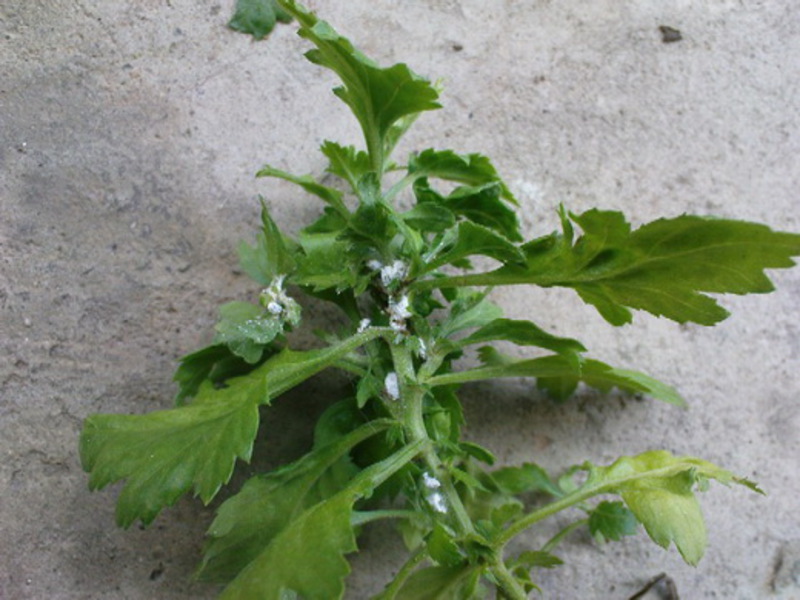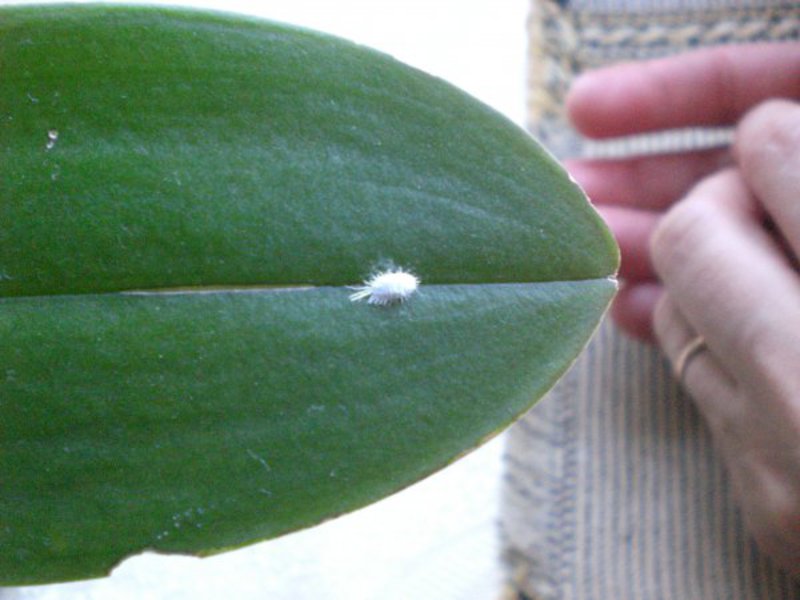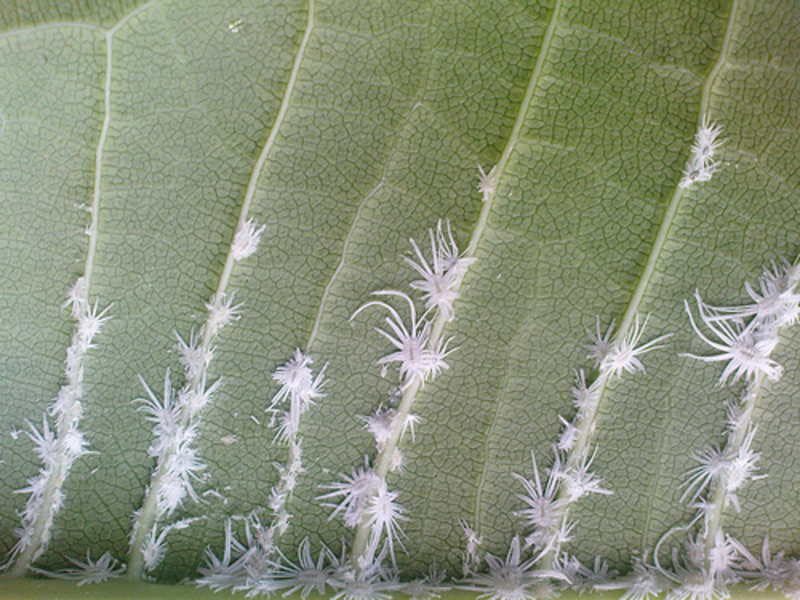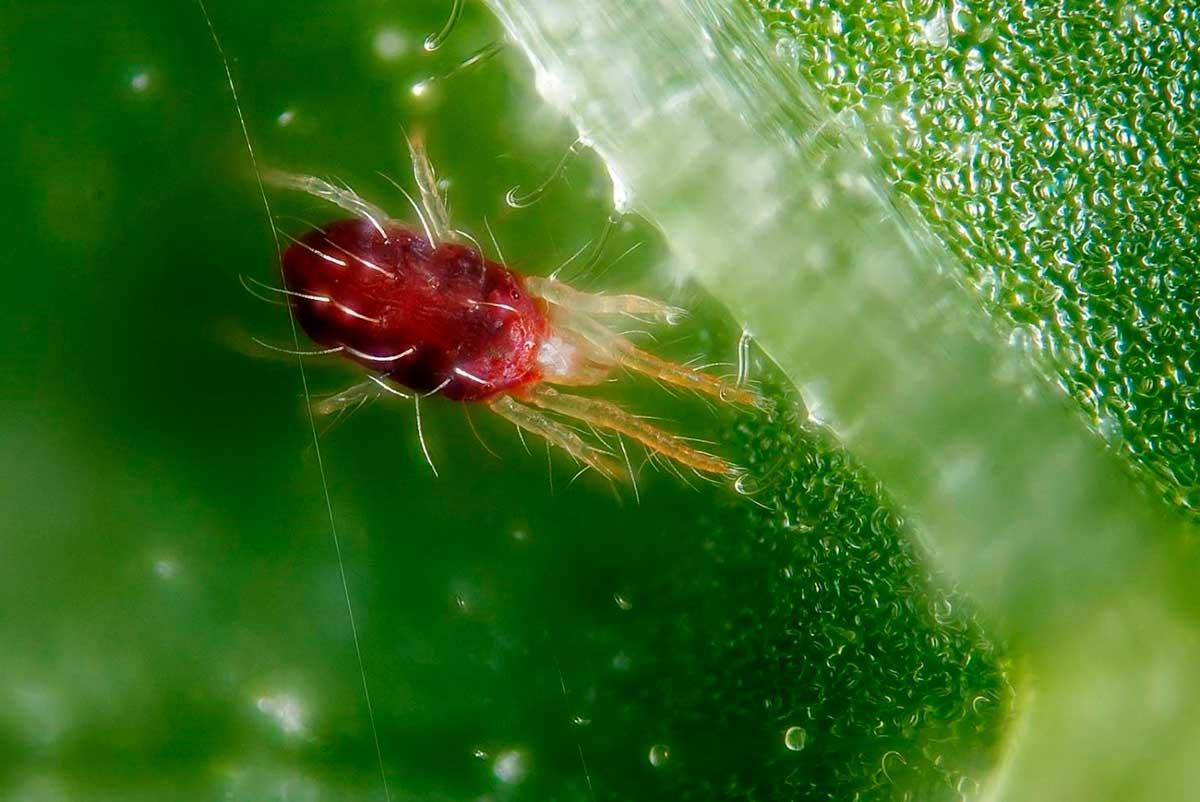Indoor plants can decorate any apartment and make it more comfortable. Few can bloom for a long time, such as the orchid, which pleases with its flowers for more than six months. But there are situations that the plant suddenly becomes covered with a white bloom. Most often, this indicates that it was attacked by a parasite such as a mealybug. Florists almost always cope with this problem successfully. It is necessary to figure out what a mealybug is, a photo of which can be seen in this article, and how to deal with it.
Content
What is this insect?
Mealybugs are sucking insects with an oval body. It is covered with a white bloom with peculiar bristles on the sides. Since the body is pink or white with transverse stripes on the back, this insect can also be seen with the naked eye. Depending on the variety its dimensions range from 3 to 7 mm... This pest produces white sticky mucus, which gives the impression that the plant has been sprinkled with flour or cotton balls on top. It is under them that a mealybug or a clutch of its eggs is found.
This mucus interferes with gas exchange in flowers. The insect prefers to settle on young shoots, in the axils of leaves or inside them, when they have not yet opened, as well as in buds. These individuals can appear directly on the windowsill, in containers for flowers, and even in the soil.
In total, about 1600 species of this insect are known. The following types of worms are considered the most dangerous for indoor plants:
- bristly;
- seaside;
- grape;
- citrus.
Favorable conditions for breeding
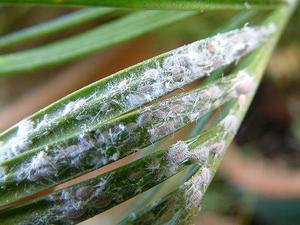 When fertilizing soil with indoor plants, special care must be taken. In no case you can not make feeding in large quantities, as this creates ideal conditions for the reproduction of the worm. Also, this pest settles on flowers, which are very often fed with fertilizers containing nitrogen.
When fertilizing soil with indoor plants, special care must be taken. In no case you can not make feeding in large quantities, as this creates ideal conditions for the reproduction of the worm. Also, this pest settles on flowers, which are very often fed with fertilizers containing nitrogen.
A favorable temperature for insect breeding is +27 degrees or slightly lower. The larvae from the laid eggs appear quickly enough. Healthy plants have excellent immunity and produce protective substances that repel the worm. However, in winter, metabolic processes are disturbed. As the daylight hours become short, the flowers begin to lack lighting, and the air in the apartment becomes too dry due to the working central heating batteries. Plants become weak, which increases the risk of a pest.
Why is a mealybug dangerous?
To feed, the pest needs the juice of a houseplant, which causes significant damage to the flower. In addition, in the process of life, this insect secretes nectar, which has a special composition that promotes the reproduction of molds and attracts other insects. Without taking timely measures, the flower dies.
There is a type of mealybug that females do not need males to reproduce. Individual subspecies produce offspring without laying eggs. In this case, viviparous individuals reproduce the larvae, ready for independent life.
Basically, this pest appears on such a beautiful flower as an orchid, which adorns the windowsills of many apartments and offices. In addition, the insect infects citrus fruits, philodendrons, gerberas, fuchsias, asparagus, monstera, grapes, cacti, amaryllis, oleanders, palms, anthurium, hibiscus.
Venom secreted by worms leads to weakening of orchid growth, discoloration and leaf fall. In flowering plants, buds and already blossoming flowers begin to suffer. Active reproduction of these insects often leads to deformation of young shoots in orchids. In violets, the root system is damaged.
Mealybug: how to fight?
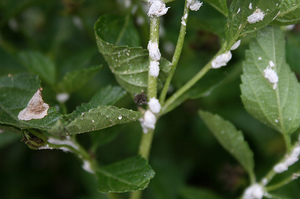 On indoor plants, and especially on an orchid, this pest is found quite often. Such favorable factors for them as:
On indoor plants, and especially on an orchid, this pest is found quite often. Such favorable factors for them as:
- poor care;
- use of contaminated soil;
- increase or decrease in temperature.
It is very difficult to deal with this pest. The very first thing to do is isolate the affected flower from other plants to avoid contamination. It is best to inspect the flowers that were near the diseased specimen. If a peduncle or bud is affected, they should be cut off.
If the parasites have attacked a small area, then wipe it with a damp sponge. It is much worse if the worm has struck the core of the orchid. As already mentioned, the sinuses of plants are considered the favorite place of the pest, which makes it very difficult to get rid of it. You should not climb there, because these are important organs of orchids. To eliminate the worm, it is picked up with simple tweezers. If the pest has settled on young leaves, then the leaf must be carefully expanded and cut off 1 cm from the top.This will not cause any harm to the houseplant, but will get rid of the mealybug.
Popular ways of fighting
It is not necessary to use chemicals to kill an insect that infects indoor flowers, such as an orchid. There are a large number of folk ways with which you can get rid of this pest forever.
The most common method is the use of a soap-alcohol solution... To cook it, you should 1 tsp. Dissolve the grated laundry soap in hot water. Then the volume of liquid is brought to 1 liter, after which 1 tbsp. l. alcohol and 2 tbsp. l. vodka. Before spraying, the substrate is closed in a pot, and the next day after the procedure, it is washed with warm water. For the best effect, spraying is recommended every 3 to 4 days.
Garlic tincture has proven itself well. For its preparation, take 4 - 5 cloves of garlic and chop. After that, bring to a boil half a liter of water, to which garlic is added. The resulting solution should be wiped off the affected leaves.
You can also make an olive emulsion. For this, a few tablespoons of olive oil are stirred in water and applied to the orchid using a cotton pad.
Chemical methods
 You can fight mealybugs using chemicals... They are best used when young parasites are just emerging. This is the difficulty in killing insects, since a houseplant can simultaneously contain different regeneration of pests. Therefore, one cannot get rid of chemical treatment at once. Such drugs should be used at intervals of 7 to 14 days.
You can fight mealybugs using chemicals... They are best used when young parasites are just emerging. This is the difficulty in killing insects, since a houseplant can simultaneously contain different regeneration of pests. Therefore, one cannot get rid of chemical treatment at once. Such drugs should be used at intervals of 7 to 14 days.
There are a large number of different chemicals, the action of which is that after its application, the protective substance penetrates into the plant sap. Insects suck it out and poison it.
All chemicals are divided into the following types:
- Systemic - fall into the juice of indoor flowers, making them poisonous to the worm. These include various sprays such as Rogor and Phosphamide. The most effective are insecticides consisting of malathion and parathion.
- Intestinal - enter the pest's body through the mouth. These drugs include "Aktellik", "Aktara", "Nurell-D".
- Contact - enter the body of the worm through the skin. The most common drug in this group is Spruzit - aeschadlingsfrei. During treatment with this agent, the plant should not be left in the sun. They do not need to re-process the flowers.
Biological methods
In nature, there are insects that feed on mealybugs. These include wasps, larvae of cryptolemus, gummy flies, common goldfinches.
Biological way of fighting with this pest is the use of microbiological preparations (fungal, bacterial) - lepidocides. This method is often used in greenhouses and greenhouses, where Australian god boxes are produced to eliminate parasites.
Preventive measures
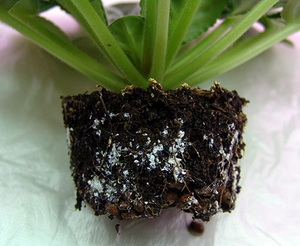 If a mealybug appears on an orchid or other indoor flowers, do not be upset. It is best to remember if new plants have recently appeared in the apartment? They can be the source of the disease. Therefore, after purchase, the flowers must be carefully examined.
If a mealybug appears on an orchid or other indoor flowers, do not be upset. It is best to remember if new plants have recently appeared in the apartment? They can be the source of the disease. Therefore, after purchase, the flowers must be carefully examined.
Even if nothing is found, this does not indicate the absence of the pest. Larvae can hide in the soil or packaging container.
It is not recommended to put freshly purchased plants with "permanent residents" at once. They must be placed in a separate place and watched for several days. If the flower is infested with parasites, it should be treated.
Thus, it is necessary to fight the mealybug, the photo of which is presented in the article. This pest does not tolerate high humidity and good lighting. Therefore, you should create such conditions under which the likelihood of the appearance of a parasite is excluded, but you still need to be always on the alert.

